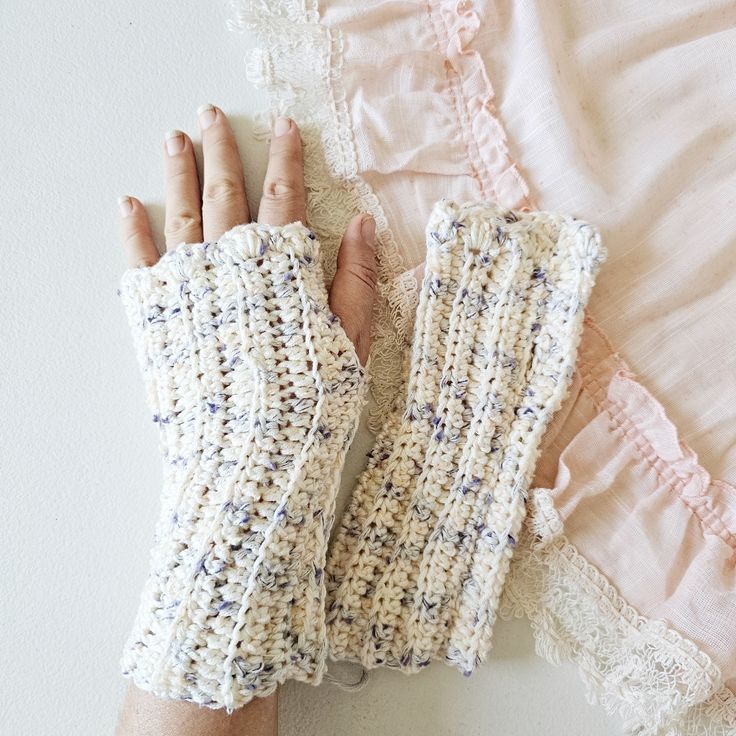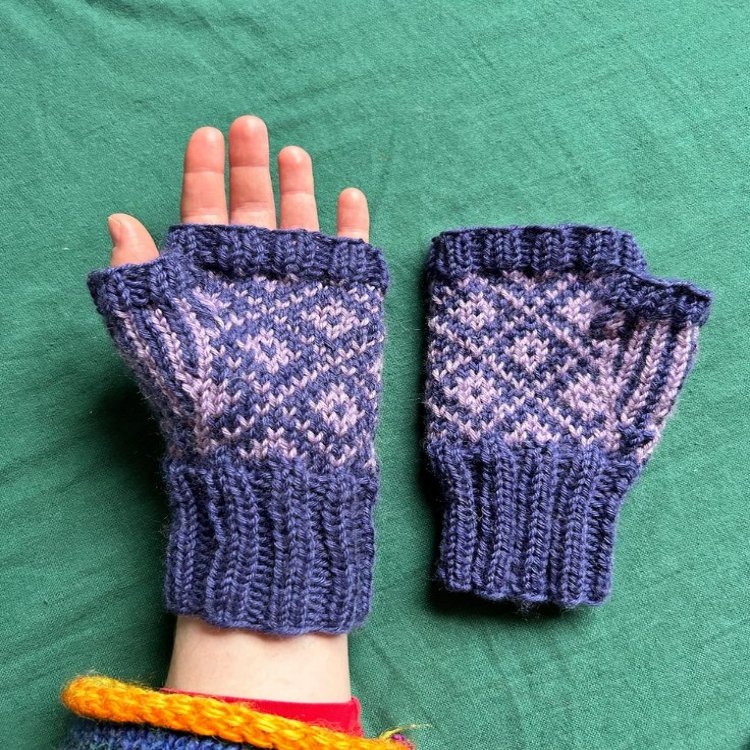Introduction to Crochet Fingerless Gloves
Crocheting fingerless gloves is a fun and practical project. For those new to crocheting, they provide a great way to practice stitches and learn the craft. Many people prefer fingerless gloves because they keep your hands warm while allowing full dexterity of your fingers. This is especially useful for activities that require fine motor skills, like typing or knitting. Whether you’re looking to create a cozy accessory for yourself or a personalized gift for a friend, fingerless gloves are a great option. As you gain confidence and skill, you can even modify your fingerless gloves into full-fledged gloves with ease. We will walk you through the necessary materials and simple steps about how to crochet fingerless gloves.
This guide aims to make the process easy and enjoyable. By following the instructions and using the recommended materials, you’ll have a new pair of gloves in no time. Whether you’re a beginner or an experienced crocheter, you’ll find something valuable in this comprehensive tutorial. So, grab your crochet hook, choose your yarn, and get ready to create something wonderful for your hands.

Essential Materials and Tools for Crocheting Gloves
Before you start creating crochet gloves, gather your essentials. Here’s what you’ll need:
- Crochet hooks: The size of your hooks determines the stitches’ size. Keep various sizes handy.
- Yarn: Choose a yarn weight suitable for gloves. Lighter weights work best.
- Stitch markers: These are crucial for marking finger positions and changes.
- Scissors: A sharp pair will cut yarn cleanly.
- Yarn needle: For weaving in ends to finish your gloves.
Pick a yarn in wool blend or another warm, flexible material. Remember, bulkier yarns make clumsier gloves. Start with a fine (number 2) or medium (number 3) weight yarn for comfort and easy handling.
Sizes of crochet hooks can vary. For most gloves, a hook size that matches yarn weight is a good rule. If using fine or medium yarn, try sizes between C (2.75 mm) to E (3.5 mm). These sizes keep your stitches tight enough for warmth yet allow dexterity.
Stitch markers come in handy when marking the beginning and ending of rounds or where fingers separate. Use different colors or styles to stay organized.
Always keep these tools within reach. With the right materials, you are set to start your glove-making journey.
Starting With a Basic Fingerless Glove Pattern
Starting with a basic fingerless glove pattern is key when learning how to crochet fingerless gloves. Choose a simple design as your foundation. This pattern requires less time and skill but still offers flexibility for customization. Let’s dive into the process:
- Select Your Pattern: Find a pattern that suits your style and skill level. Many patterns are available online.
- Check Gauge: Make sure your stitches match the pattern’s suggested gauge for size accuracy.
- Read Through Instructions: Understand each step before you begin to avoid confusion.
- Create a Foundation Chain: Make a chain that fits around the wrist comfortably.
- Establish the Cuff: Work a few rows to create the base of the glove.
- Build the Hand Portion: Continue crocheting to the desired height before the fingers.
- Ribbing: If desired, add ribbing for a snug fit. Work in the back loops for stretch.
Once you have the basic pattern down, you’ll be ready to add more intricate features like full fingers. Remember, the more you practice with fingerless designs, the easier it will be to transition to more advanced glove styles.

Marking Your Fingers: Transitioning From Fingerless to Full Gloves
After mastering a basic fingerless glove, you might want to add full fingers for extra warmth. This step turns a simple accessory into a more sophisticated one. Let’s start the transition to full gloves.
Firstly, slip on your fingerless gloves. Place removable stitch markers or safety pins between your fingers. Go through both the front and back sides of the glove fabric. This marks the spots where you’ll create the fingers. Ensure the markers are snug but not too tight.
Next, join new yarn at any finger edge. This connects the existing fingerless part with the new fingers you’ll crochet. You can also continue with the yarn from your last round if you haven’t cut it.
This process lays the groundwork for crafting well-fitted gloves. Remember, detailed marking is crucial for a comfortable fit. Soon, you will learn to crochet the separations. They differentiate each finger and add to the glove’s functionality.
Convert your fingerless gloves into full gloves by following these initial steps. Marking is an easy task, as long as you take care and place your markers correctly. With this simple preparation, you’re now set to crochet the separations between fingers.
Crocheting the Separations Between Fingers
After placing your markers, it’s time to crochet the separations between fingers. This creates distinct spaces for each finger in your glove. Follow these steps to achieve neat and functional separations:
- Join the Yarn: Begin by joining your yarn along the edge of a finger opening. If your last round of crochet is still attached, simply continue with that strand.
- Start Single Crochets: Crochet stitches evenly around the edge. Single crochet works well for this part.
- Create Separations: When you reach a stitch marker, work a slip stitch to the fabric on the other side. This will form the space between fingers.
- Continue Around: Keep crocheting single stitches and slip stitching at markers. The glove will start to take shape with each finger space.
- Repeat for Each Finger: After completing one separation, move on to the next. Unpin and repin markers as needed to maintain proper placement.
This technique ensures your glove fits comfortably and each finger is clearly defined. By using this method, you can turn any fingerless glove into a full glove with ease.

Crafting the Fingers: The Spiral Technique
Crafting the fingers of your crochet gloves is an intricate step, but with the spiral technique, it becomes manageable. Follow these simple steps to create each finger:
- Start the Spiral: At the side of the hand opposite from where you added the separations, begin crocheting in a spiral pattern. Crochet into the leg of the slip stitch closest to your last crochet stitch.
- Crochet in the Round: Work a single crochet in continuous rounds. Do not join or turn your work. This will form a tube that fits the length of your finger.
- Measure for Length: As you crochet, frequently check the fit on your finger. Continue until you reach the desired length.
- Finish and Start Next Finger: Cut the yarn, secure it, and rejoin the yarn alongside the completed finger to start the next one using the same spiral method.
- Maintain Consistency: Work each finger with the same number of stitches per round to ensure uniformity.
This spiral technique helps to avoid visible seams and gives your gloves a polished, professional look. The simplicity of this method also makes it easier to pick up where you left off, should you need to pause your project.
When using the spiral technique, always remember to mark the first stitch of the round with a stitch marker. This will help you keep track of your progress and ensure even finger lengths. Once you master this technique, you can seamlessly crochet each finger and give your homemade gloves a neat, fitted finish.
Crocheting the Thumb: Adjusting for Size
When making gloves, the thumb is different from the fingers. You’ll need to adjust for size. Here’s how:
- Join Yarn at Thumb Base: Start at the thumb hole’s edge, where you join new yarn.
- Start Crocheting Around: Make single crochets around the hole to form the thumb.
- Decrease for Fit: The thumb’s base is wider than its tip. Make single crochet two together (sc2tog) at the start of some rounds.
- Check for Fit: Try on the glove to ensure the thumb fits comfortably, not too tight or loose.
- Repeat the Spiral: Like fingers, work the thumb in a spiral without joining rounds.
- Continue to Desired Length: Keep crocheting until the thumb covers your thumb well.
- Finish Off: Cut the yarn, pull through the last stitch, and weave in ends.
Thumbs can be tricky if you don’t get the size right. So, keep trying it on. And remember, crocheting is forgiving. If it’s not right, you can pull out stitches and redo it. Once the thumb fits well, you’ll see your gloves coming together beautifully.
Finishing Touches: Cinching and Weaving Ends
After meticulously crocheting each finger and the thumb, your gloves are almost complete. But before you can show off your handiwork, it’s crucial to apply the final finishing touches. This involves cinching the ends of the fingers for a snug fit and weaving in any loose ends for a neat presentation. Here are the steps you need to follow:
- Cinch the Fingers: Once each finger reaches the desired length, cut the yarn leaving a tail. Use a yarn needle to thread the tail through the last round of stitches. Pull the yarn tight to cinch the end of the finger closed and secure it with a knot.
- Weave in Ends: With the yarn needle still threaded, weave the tail in and out of several stitches inside the glove. This hides the yarn end and prevents it from unraveling. Trim any excess.
- Neaten the Thumb: Repeat the cinching process for the thumb. Ensure you don’t pull too tightly to maintain comfort.
- Finish the Glove: Go back to any other spots where yarn is tied off or where strands were joined. Repeat the weaving-in process for these ends. Once all ends are neatly tucked away, your gloves will look professionally made.
- Inspect the Glove: Give your glove a final inspection. Stretch each finger and the thumb to even out the stitches. Make any minor adjustments needed for the best fit and appearance.
These final steps are simple yet make a huge difference in the quality of your crochet gloves. They transform your creation from an amateurish attempt into a polished, well-made accessory. Don’t skip these vital finishing touches – they’re the key to showcasing your growing crochet expertise.